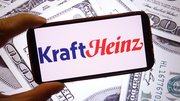Article
Item-level tagging may dominate RFID market
Item-level tagging — the tagging of the smallest possible unit in the supply chain — is poised to be the largest RFID market by value, worth $11 billion by 2016.
July 8, 2006
Item-level tagging refers to the tagging of the smallest "tag-able" unit of things. It is happening faster than most realize — 200 million tags will be used in 2006 for item-level tagging alone — mainly for apparel, books and drugs. From 2007 it will be the world's largest RFID market by value, rising to a value of $11 billion for tags and systems of a $26 billion RFID market in 2016. The anticipated sales of RFID tags in 2006 are shown in the table below (the highest volume market is not the highest by value).
Application | Number million | Why |
Drugs item level | 20 | Pfizer, GSK anticounterfeit .. |
Library, laundry, apparel | 65 | 1-2 year payback: cost, service |
Pallets/ cases | 500$0.09 billion | Big problems but will save cost/ improve service |
Cards | 285$0.63 billion | China national ID: financial, security, transport |
Tickets/ secure documents | 65 | Portugal, Japan: security, speed |
Air baggage | 85 | Las Vegas, Hong Kong: cost, service, security |
Livestock | 50$0.2 billion | New laws: safety, cost |
Car clickers | 46 | Consumer demand |
Passports | 25 | New laws: security |
Other | 159 | Manufacture, health, vehicle etc |
Total | 1300 |
|
Source IDTechExwww.idtechex.com
RFID has already been demonstrated to increase sales of clothing by several percent when used to ensure shelves are not left empty. Marks & Spencer, for example, is rolling the technology out to 53 stores across the U.K. this year, tagging men's and women's suits. Marks & Spencer is the U.K.'s largest clothing retailer and sells parts of suits separately, so people can choose the right sizes for each part. RFID helps the retailer ensure that when stock of one size is running low on the shelf, it can be monitored and replenished in good time to prevent lost sales. The tagging of library books is by no means new, with 200 million books around the world already tagged; but the market is growing, with tens of millions of books likely to be tagged this year. For example, Essex County Council in the U.K. have been so pleased with their RFID pilot in one library that they are now rolling out RFID to every public library in the county. Interestingly, not all tags used for item-level tagging today have to be the cheapest: The average tag price for item-level applications in 2006 is 40 cents, compared to 18 cents for tags that are used to tag pallets and cases. For example, the aviation industry seeks robust, large memory tags for tagging parts and equipment. Longer term, the technology to achieve item-level tagging will most likely not be chip-based. To reach the critical low price points required for item-level tagging of high-volume items such as documents and most products, technologies like printed thin film transistor circuits, printed electronics and Surface Acoustic Wave devices are all suitors.










